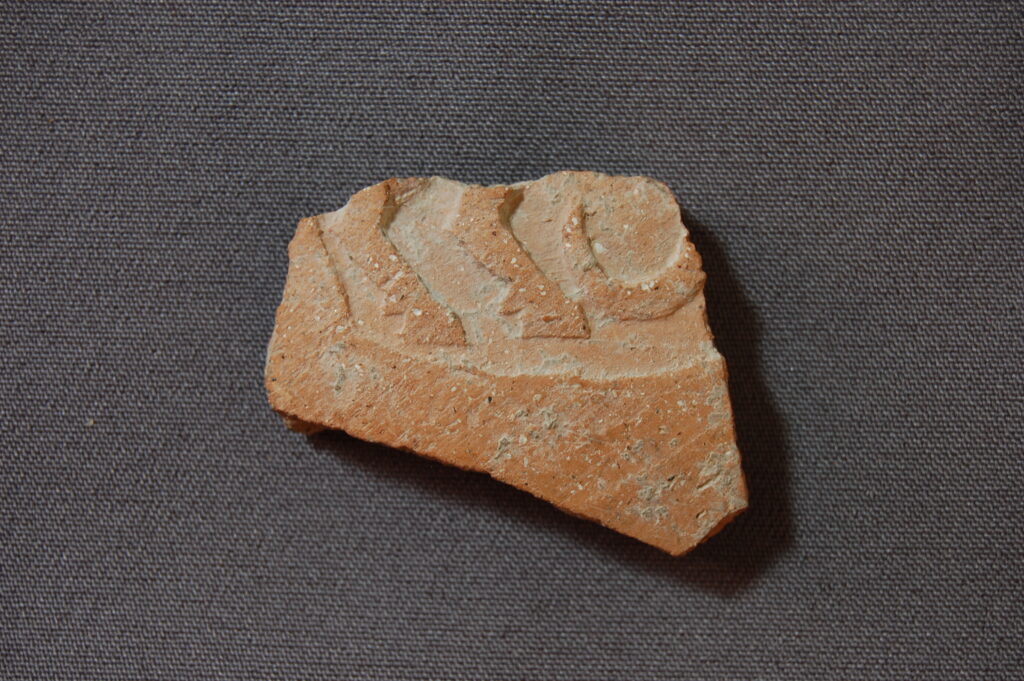Area B
Qalrakh, Area B
Area B refers to the trench on top of Gird-i Qalrakh. Work was carried out here in all campaigns – 2016, 2017, 2019 and 2023. An area of almost 300 square meters has now been uncovered. The main aim in this area is to uncover the early Sasanian settlement layer over a large area.
Islamic Layers
On the entire top of Qalrakh massive layers of the Islamic period – about 2 m in height – were recorded. These probably date from the Abbasid period to the time of the First Gulf War (1980–1988). It is hardly possible to differentiate between the layers due to their highly fragmentary state of preservation and numerous pits, which obscure any stratigraphy.
Some pits with a rectangular cross-section are certainly more recent. These are likely to be trenches from the period between 1980 and 1988, when Qalrakh was used as a military position for some time. Modern cartridges were also occasionally found.
The remains of mud-brick walls, walking surfaces or even tananir could not be dated with certainty due to the heavily disturbed condition. Based on the pottery found, however, these are likely to be dated to the early Islamic period. Nearly complete vessels were frequently discovered in pits, cutting into the earlier Sasanian layers.
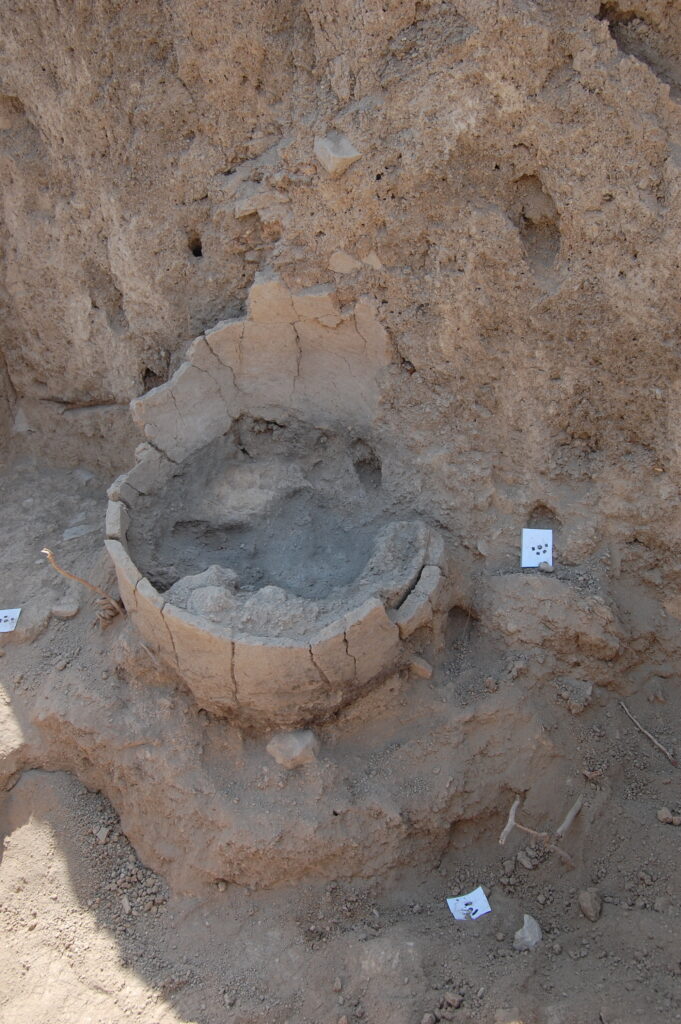
Individual burials can also be dated to the early Islamic period. It can be assumed that at least two of the deceased were followers of the Islamic faith. Both people were buried in simple earthen pits and were facing Meqqa. No grave goods were found in either of the two graves, although the heads were placed on a large river pebble. The third burial is something of a curiosity. It certainly had a different orientation to the ones described. But above all, however, the head of the deceased was missing.
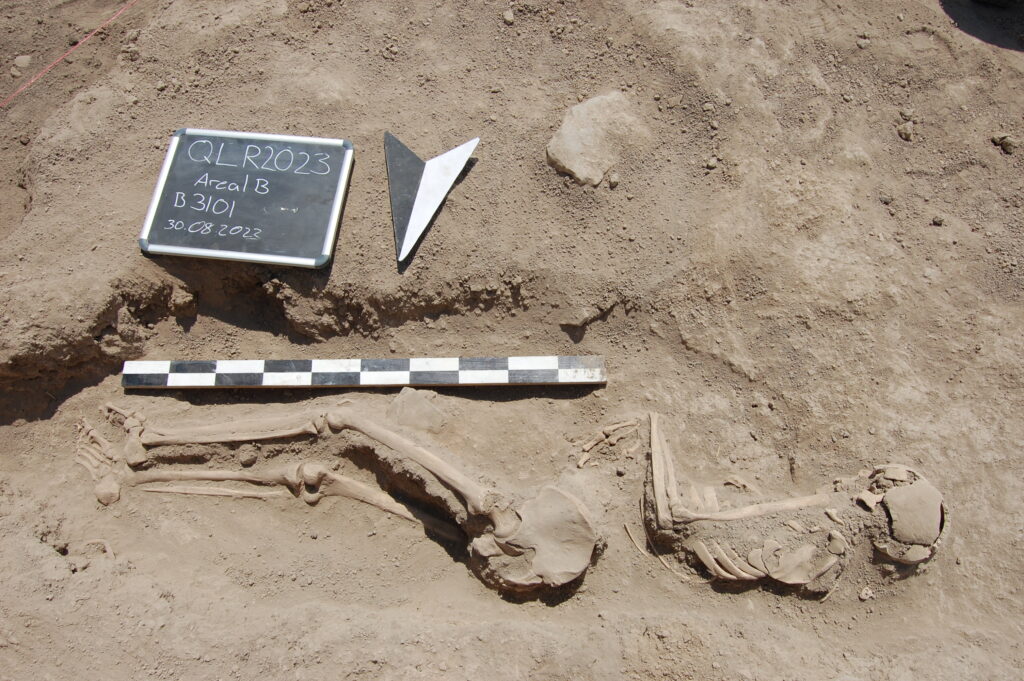
Sasanian Layers
Sasanian features were found on the entire top of the mound. It appears, that this is just a single, larger building. Before the building was constructed, the entire area was leveled; in places a foundation of mud bricks was laid. It was only later that the walls, consisting of uniform mud-brick formats, were erected. The outer walls of the building in particular – but also some of the internal walls – are over 1 m wide. The floors in the entire building consist of simple stamped mud.
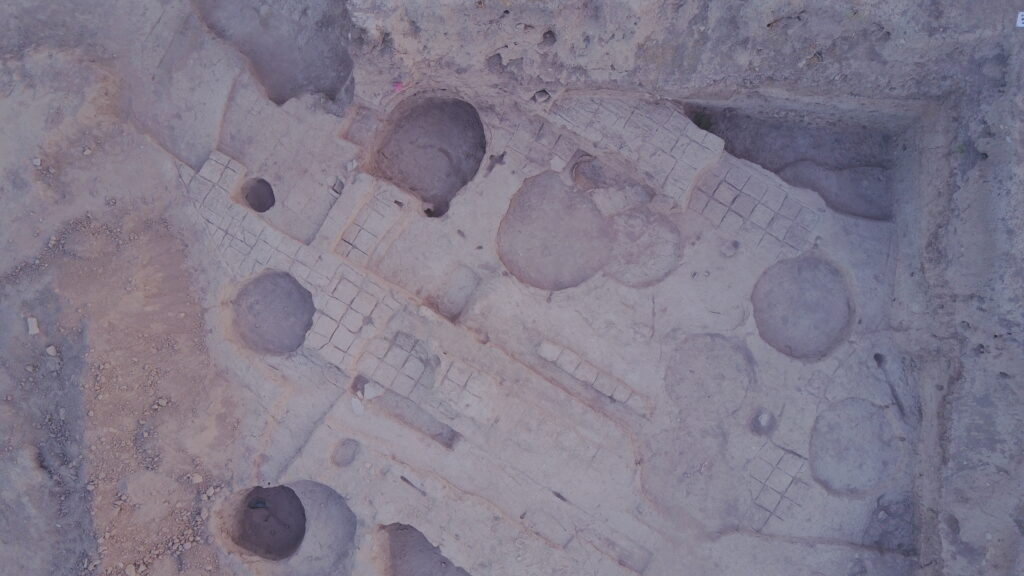
The individual rooms show a variety of different activities. Not surprisingly, several large storage vessels were embedded in the floor and distributed across various rooms. Not all of the vessels will have been used for long-term storage; rather, some of the vessels appear to have been used for other tasks, e.g. cooking.
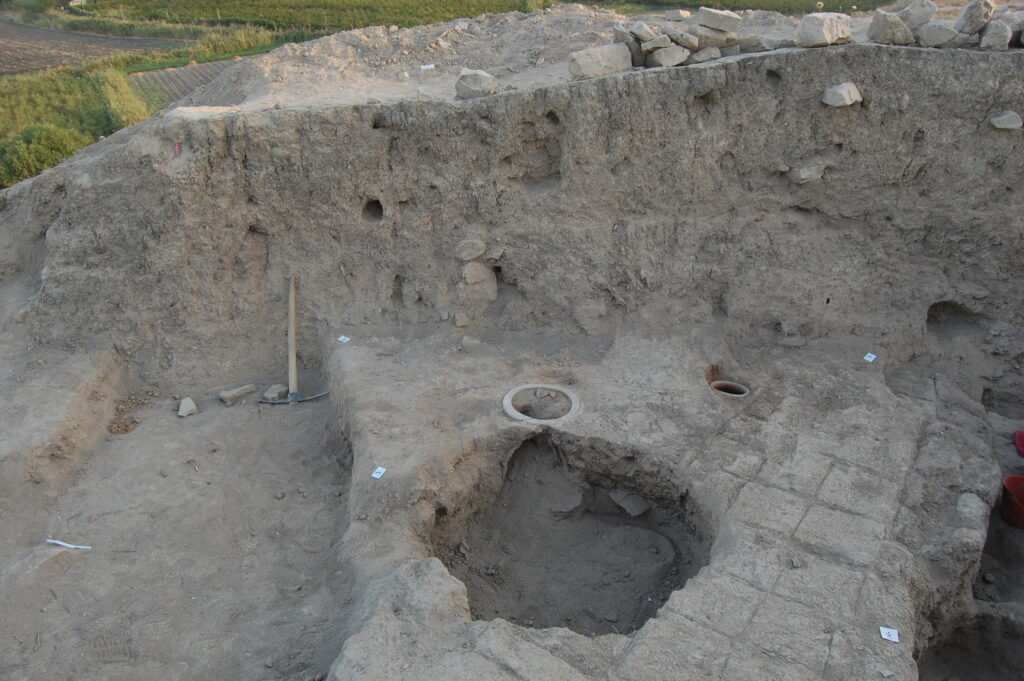
Tananir were also uncovered in two of the larger rooms – an indication that cooking probably took place here. Both rooms probably also served as main rooms of the building – so not only was cooking done here, but the rooms were also used for reception, sleeping and for various other activities.
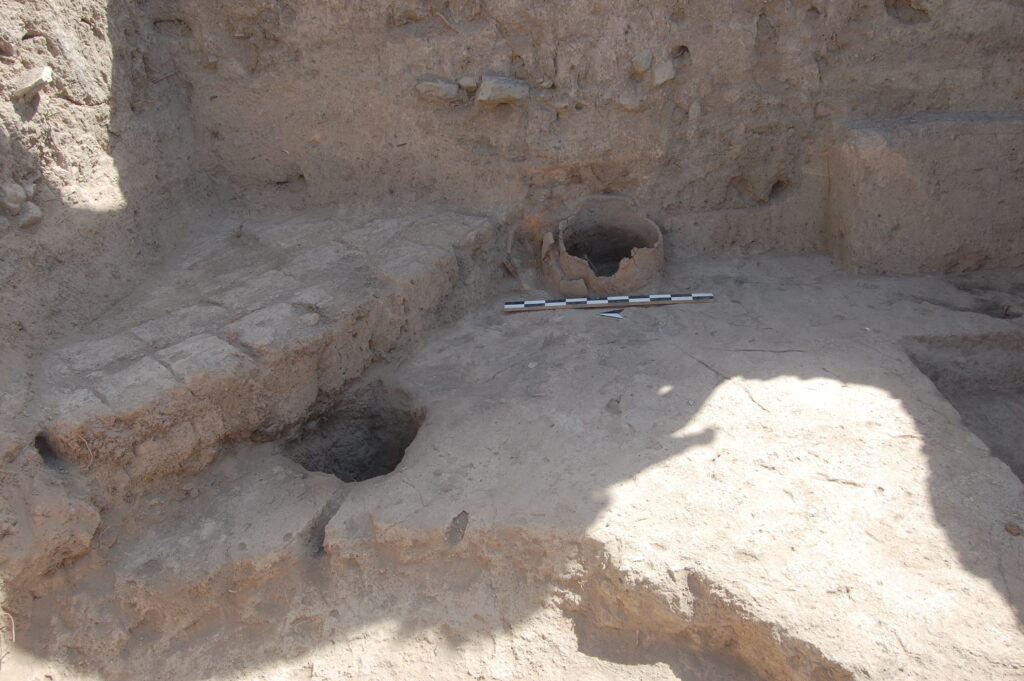
The finds and structures in the area of the southern of the two main rooms are certainly special. Fragments of around 30 clay closures with seal impressions and the charred remains of a weaving frame were uncovered. The weaving frame was a fairly simple construction – a simple wooden frame leaning against the south wall of the room. A large number of loom weights made of clay were also found here. Almost identical loom weights were also found in other areas of the building, so it is possible that textiles were produced in several places.
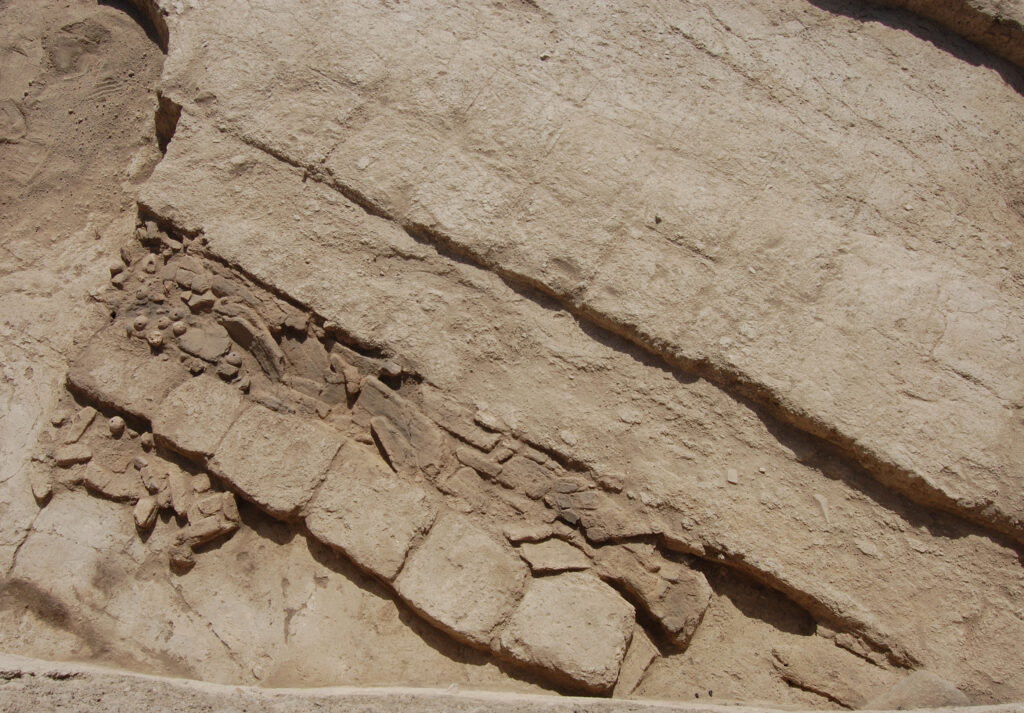
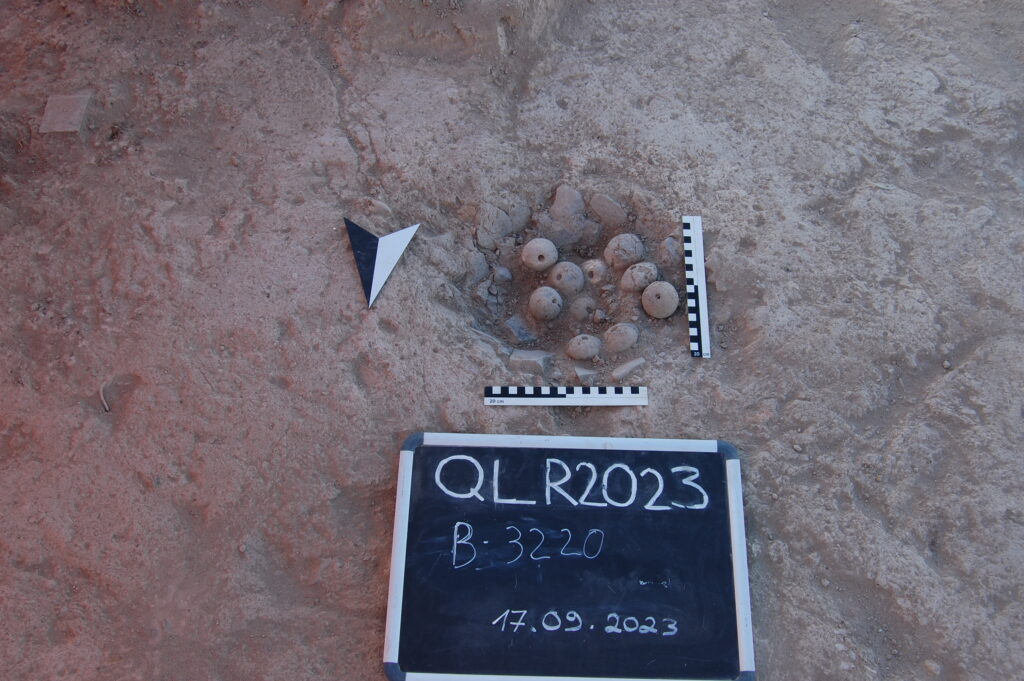
The clay closures are certainly unique, as these are not the clay bullae typical of the Sasanian period, but closures that were not attached with a string to the goods, but were intended to secure the goods directly – for example, vessel closures pressed into the opening of a jar.
Some of the images show typical Sasanian motifs, such as the so-called Gayomard. Most interesting is the sealing of a hybrid creature, which stylistically rather belongs to a Graeco-Persian group and thus might point to far-reaching trade connection.
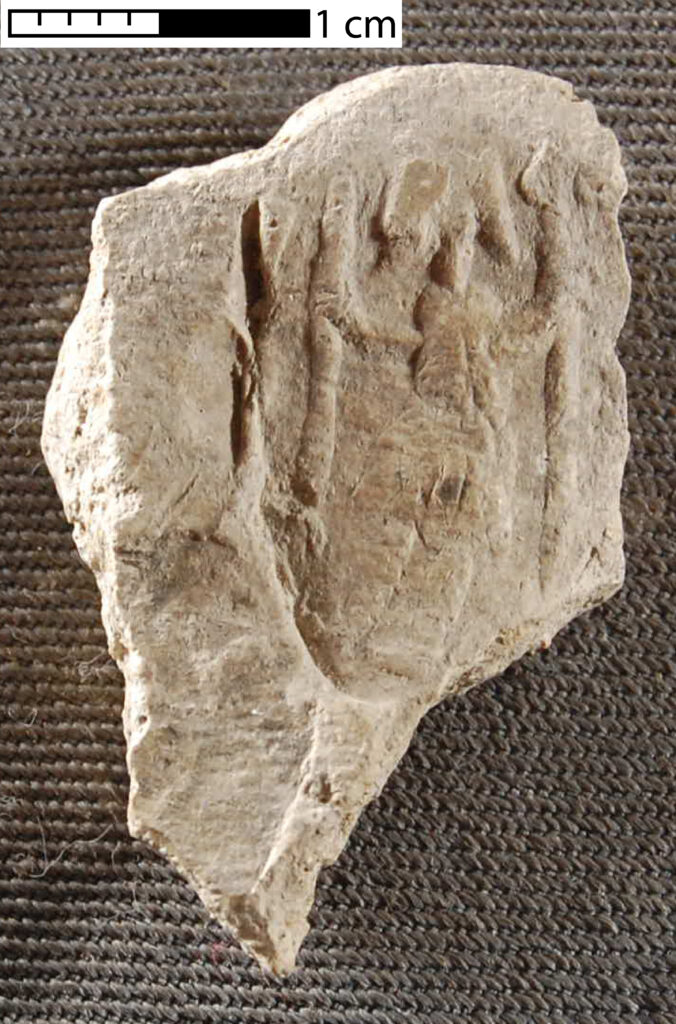
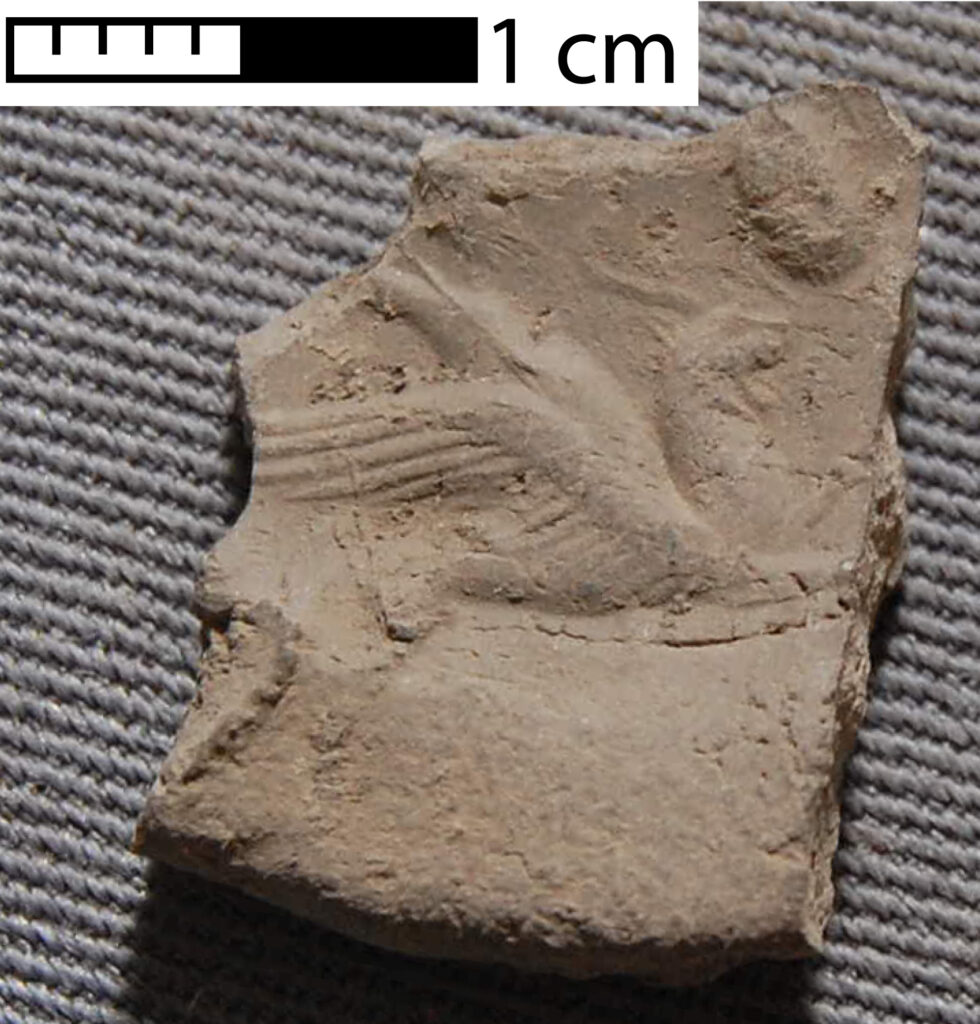
Even if it is a single building of around 400–500 square meters, the interpretation is still somewhat obscure at present. The area is certainly too small for a manor house or a larger production facility. Also, the functional areas are far too spread out or often present several times. Instead, the findings currently point to a single building in which various groups were active. For example, it could be a group of several families – a form of housing that was not uncommon in other areas of the world in this period.
Individual finds – such as a stamp-decorated sherd – also point to a settlement in Qalrakh in the late-Sasanian period. However, no structures have been recorded with certainty, so it is possible that the mound was only used for a very short time and no permanent housing was erected.
